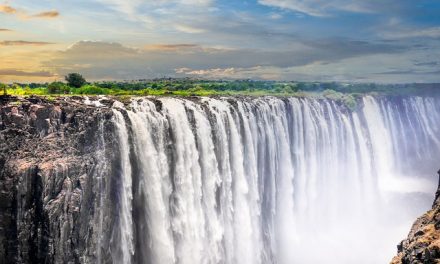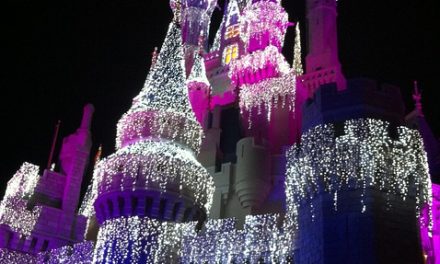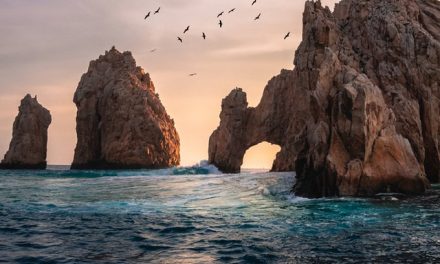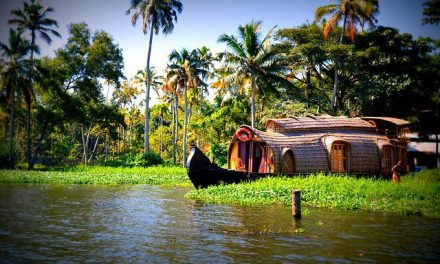Ah, Lebanon! A gem of the Middle East, this small country promises a cocktail of historical sites, vibrant cities, serene landscapes, and lip-smacking cuisine. If you’re wondering when the best time is to visit Lebanon, you’re in the right place.
Drawing upon my extensive travels and experiences, I’m here to guide you through the optimal periods to explore this enchanting land. Embark on a journey to discover the best time to immerse yourself in the wonders of Lebanon
When Magic Happens: The Best Time of Year to Visit Lebanon
Typically, the best time to visit Lebanon is during the spring (March to May) and autumn (September to November). These seasons grace the country with pleasant temperatures, perfect for outdoor explorations. Now, why are these months especially significant? So continue reading if you want to learn more about the beauty that Lebanon possesses throughout the year.
Spring: Nature’s Resplendent Reawakening
Spring in Lebanon, spanning March to May, is nothing short of poetry in motion. When I first arrived in Lebanon in March, the vibrant embrace of nature embraced me. The landscape, primarily the Bekaa Valley, becomes a painter’s palette, dappled with hues of lavender, gold, and green.
From the coastal plains to the mountainous terrain of Mount Lebanon, wildflowers carpet the earth, creating a fragrant trail for those with wanderlust. Beirut, Lebanon’s vivacious capital, is an eclectic blend of ancient and modern. To soak in its spirited ambiance, the best time to visit Beirut, Lebanon, is undoubtedly during the spring.
Festive Flourishes
As spring begins to unfold, the Al Bustan International Festival takes the lead. Typically held in Beit Mery, this festival is a haven for classical music and arts enthusiasts. From opera to orchestral performances, it captivates attendees with its diverse program.
Subsequently, the Garden Show and Spring Festival in Beirut herald the season’s essence. Landscapers, florists, and environmentalists gather to showcase the latest in garden design and green innovations. It’s not just a visual treat; workshops and gastronomic delights make it an enriching experience.
Subsequent to the Garden Show, as Easter approaches, Palm Sunday is celebrated with enthusiasm, especially in Christian-majority regions. Processions with children holding palm fronds and olive branches are common sights, symbolizing Jesus’ entry into Jerusalem.
Finally, spring witnesses the culmination of the Lenten season with Easter. While the Western and Eastern Christian traditions might differ in dates, both celebrations are marked with church services, feasts, and the delightful distribution of Maamoul, a traditional semolina cookie filled with dates or nuts.
Adventurous Spring Pursuits
Feeling adventurous? For those itching for activity, this season lays out a smorgasbord of options. The temperate climate is perfect for hiking through the Qadisha Valley, a UNESCO World Heritage Site. Here, amidst age-old monasteries and hermitages, the trail meanders through verdant gorges and serene nooks.
Cycling enthusiasts can revel in the routes of Batroun or Byblos, juxtaposing coastal views with historic sites. Meanwhile, paragliding over Jounieh Bay offered me a bird’s-eye view of the coastal cities and the vast expanse of the sparkling Mediterranean Sea.
Summer, Sun-Kissed Sojourns: Best time of the year to visit Lebanon
June to August in Lebanon are characterized by their lively atmosphere. Transitioning from the chill of spring, the Lebanese landscape transforms into a sunlit wonder. The famous cedar trees, symbolizing the country’s enduring spirit, stand tall and regal against azure skies.
Beaches, from the bustling ones in Beirut to the serene stretches in Tyre, beckon visitors with their golden sands and the cool embrace of the Mediterranean.
Festivals and Celebrations
To start with, the Baalbeck International Festival is among the most renowned. Taking place amidst the ancient Roman ruins in Baalbeck, this festival showcases a variety of performances, from classical concerts to contemporary acts, set against a backdrop of historical grandeur.
Following closely on its heels, the Byblos International Festival stands out. Staged in the historic coastal city of Byblos, it is a melting pot of musical genres. International and local artists grace the stage, entertaining thousands against the backdrop of the ancient Phoenician port.
Additionally, the Beiteddine Art Festival in the magnificent Beiteddine Palace is a must-visit. Over the course of several weeks, it offers a plethora of cultural events, from music and theater to art exhibitions, attracting both local and international talent.
Furthermore, the Jounieh International Festival is another highlight of Lebanon’s summer. It is well-known for its eclectic lineup, which includes a variety of art forms, and the spectacular fireworks display that opens the festivities.
In the same vein, the Al Bustan Festival, although primarily celebrated in winter, sometimes stretches its events into early summer. Focusing on classical music, this festival brings together musicians from all over the world in the picturesque town of Beit Mery.
Last but not least, there are many local festivals celebrating the patron saints of towns and villages or the harvest of local produce. The Festival of the Assumption of the Virgin Mary is one such spiritual celebration observed in various locations.
Activities and Adventures
But what about adventure seekers? Well, Lebanon in the summer does not disappoint. The rugged mountains, which remain snow-capped even in the warmer months, present thrilling opportunities for hiking and trekking. Paragliding over Harissa Mountain provides not just an adrenaline rush but also panoramic views of the coastline and the expansive sea.
For those inclined towards a more leisurely pace, there’s no shortage of activities. One can indulge in wine tasting tours in the Bekaa Valley, savoring the flavors of wines that carry the essence of the sun and soil. Or take a stroll through the souks of Beirut, where the air is fragrant with the aroma of spices and filled with the soft hum of bargaining.
Autumn: Harvest Hues and Gastronomy
September to November in Lebanon is a sensory delight. As the first chill of the season begins to touch the air, Lebanon’s vast landscapes undergo a dramatic transformation. The majestic Cedars of Lebanon, a symbol of the nation, take on a different kind of charm.
The trees in the renowned Qadisha Valley gradually change their shades, giving the entire region a mesmerizing golden-yellow tint. Furthermore, the terraced olive orchards, with their silver-green leaves, create a stark contrast against the background.
Driving along the country’s coastlines and through its mountain ranges, one can’t help but admire the tapestry of colors that unfolds. The coastal cities like Beirut, Sidon, and Tyre still resonate with the remnants of summer’s energy but are slowly preparing for the winter.
Festivals and Celebrations
To begin with, there’s the “Fête des Vendanges”, celebrated primarily in the Bekaa Valley. This Grape Harvest Festival is an ode to the ancient tradition of wine-making in the region. Visitors and locals come together to participate in grape-stomping rituals and enjoy wine tasting sessions.
Following that, the Apple Festival in the Akkar region is another highlight. As apple orchards begin to bear fruit, a festival is organized to celebrate the harvest. There are parades, music, dancing, and, of course, a plethora of apple-based dishes to relish.
Additionally, while the date may vary depending on the lunar calendar, “Eid al-Adha” sometimes falls in the autumn season. It’s an essential religious festival for the Muslim community. During this time, the streets resonate with prayers, feasts, and a strong sense of community.
Moreover, the “Zgharta Ehdeniyat International Festival” in the North, though often starting in the summer, sometimes extends into the early autumn. The festival, taking place in the picturesque town of Ehden, offers a mix of musical concert theater productions and cultural events, attracting both local and international audiences.
Finally, the International Film Festival in Beirut is another event to look forward to in the autumn months. Celebrating both regional and international cinema, it’s a treat for film enthusiasts, offering a platform for filmmakers to showcase their work and for audiences to indulge in cinematic artistry.
Activities Galore
Autumn in Lebanon is not just for sightseeing and festivals. It is an invitation to indulge in various activities. For adventurers, the cooler temperatures make it an ideal time for hiking and exploring the many nature trails, especially in the Chouf Biosphere Reserve or the Tannourine Cedars Forest Nature Reserve.
For history enthusiasts, the milder weather provides the perfect backdrop to explore Lebanon’s ancient ruins, such as the temples of Baalbek or the Byblos port, without the overwhelming summer heat.
Winter, Alpine Adventures: Best time of the year to visit Lebanon
Surprisingly to some, Lebanon’s winters, from December to February, can be quite snowy, especially in elevated regions. Journeying through Lebanon in the winter is akin to flipping through the pages of an enchanted book, where each chapter reveals a new, captivating tale.
For snow enthusiasts and ski lovers, Faraya is the place to be. Located in the mountains, the best time to visit Faraya, Lebanon, is during the winter months of December to March. The snow-covered slopes provide a playground for both amateur and professional skiers.
Mzaar in Kfardebian and the iconic Cedars of God in Bsharri transform into winter wonderlands, beckoning skiers and snowboarders.
Festivals: Celebrating Winter in Style
Firstly, Christmas is a significant celebration in Lebanon. Given the country’s large Christian population, the Yuletide spirit is pervasive. Streets in Beirut and other cities sparkle with lights, while homes are adorned with nativity scenes and Christmas trees. Midnight Mass is a tradition, with churches ringing out in festive carols.
Subsequently, New Year’s Eve is heartily celebrated with fireworks, parties, and gatherings throughout the country. Families and friends come together to bid farewell to the old year and usher in the new with joy and optimism.
Afterwards, the Christian community celebrates Epiphany on January 6th. Also known as Theophany, it commemorates the baptism of Jesus in the Jordan River. Church services and special prayers traditionally mark it.
Moreover, on February 9th, the Maronite Christian community observes St. Maroun’s Day. It is a day of religious reflection honoring the Maronite Church’s patron saint, with church services and social gatherings.
Activities to Engage and Enchant
In addition to skiing, winter in Lebanon offers various activities. Snowshoeing through the mountain trails is an exceptional experience, offering panoramic views of snow-capped peaks. For those seeking a unique perspective, paragliding over the winter landscapes provides an adrenaline rush coupled with breathtaking vistas.
Alternatively, take a leisurely stroll through the pine forests, soaking in the serene ambiance, punctuated only by the soft crunch of snow beneath your feet.
Conclusion:
Lebanon is more than just a travel destination; it’s an anthology of timeless tales, flavors, sounds, and sights. Regardless of when you visit, this land promises soulful encounters and enduring memories. Yet, if a harmonious blend of all experiences is what you seek, spring and autumn stand out as optimal choices. Bon voyage, and let the heartbeats of Lebanon resonate with yours!
Thank you for reading. For more travel updates, visit the Journey Index.




